All Training Courses
-

5G Radio Access Network
The 5G Radio Access Network on-demand course begins by discussing the key features of a 5G network before delving into the finer detail of the 5G New Radio. The 5G RAN is described in terms of network architecture, base station characteristics, spectrum usage and multiple antenna configurations. The transport of signalling and traffic over the 5G RAN interfaces, fronthaul and backhaul are analysed followed by an in depth study of the signalling protocols used over those interfaces. Our 5G Radio Access Network training course is designed to provide professionals in the telecommunications industry with the knowledge and skills needed to effectively design, deploy, and manage 5G networks. In this course, participants will learn about the key concepts and technologies behind 5G RAN, including massive MIMO, beamforming, and network slicing. By enrolling in our 5G RAN training course, you will be equipped with the latest industry insights and best practices to stay ahead in the rapidly evolving telecommunications landscape. Whether you are a network engineer, system architect, or project manager, this course will provide you with the tools and expertise needed to drive successful 5G RAN deployments. Join us at Wray Castle and take your career to the next level with our comprehensive 5G Radio Access Network training course. Who Would Benefit Engineers that need to know about the 5G Radio Access Network in terms of its characteristics, architecture, interfaces and operation Pre-requisites Ideally attendees will have a mobile telecommunications or radio background gained from the study of or working with GSM, UMTS or LTE networks. Topic Areas Include Introduction to 5G 5G RAN NG Interface Messages and Procedures Xn Interface Messages and Procedures E1 Interface Messages and Procedures F1 Interface Messages and Procedures Multi-RAT Dual Cennectivity Optional 5G Virtual Lab Module Explore, Test, Optimise, and Troubleshoot the 5G System Deep dive into the key signalling scenarios in the 5G system and analyse the output to build a deeper understanding that goes beyond the theoretical. The lab is a fully emulated 5G System environment that enables you to experiment with the configurations for Network Functions and build customized settings for signalling scenarios that helps you to develop greater insight into the operation of the 5G System. Lab modules can be added to any relevant 5G course. Learn more and arrange a demo. Also available as a Self-Paced Online Training Programme, learn more.
POA: Private Course
-
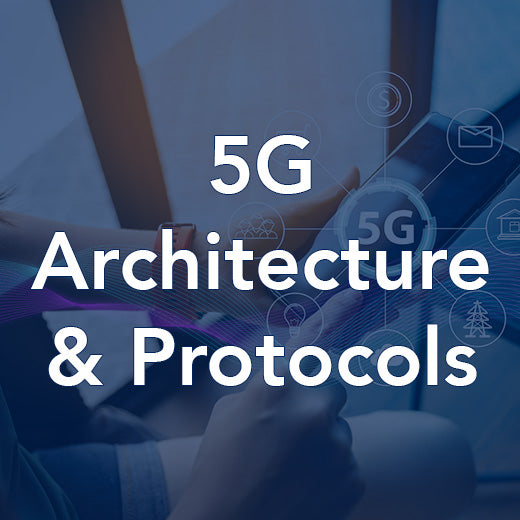
5G Architecture and Protocols
Course Code: FG1715 This 5G Architecture and Protocols training course is a detailed technical description of the core and radio access networks of 5G. It covers the architecture and interfaces used by 5G, the protocols used for signalling and data transport, the provision of services over a 5G network, and the procedures for signalling and system operation. Who would benefit The course is intended for engineers and other staff who are involved with the architecture, optimization, management, monitoring or testing of the 5G network. Prerequisites An engineering background with some knowledge of core and radio access network technologies is assumed. A basic understanding of 5G and experience of LTE networks would be desirable. Topic Areas Include: 5G introduction, use cases and standardisation Radio access network architecture and deployment options Network architectures for dual connectivity Architecture of the 5G core network Network Function virtualisation, slicing and orchestration Interworking and compatibility between 5G, LTE and Wi-Fi PDU connectivity, Quality of Service and service provision Control plane and user plane protocols in the 5G network Implementation of network function services using HTTP/2 Signalling procedures for registration, security and session management Network operation in Idle, Inactive and Connected modes Optional 5G Virtual Lab Module Explore, Test, Optimise, and Troubleshoot the 5G System Deep dive into the key signalling scenarios in the 5G system and analyse the output to build a deeper understanding that goes beyond the theoretical. The lab is a fully emulated 5G System environment that enables you to experiment with the configurations for Network Functions and build customized settings for signalling scenarios that helps you to develop greater insight into the operation of the 5G System. Lab modules can be added to any relevant 5G course. Learn more and arrange a demo. Trainer: Tony Wakefield Tony is an experienced technical trainer and competency development specialist having worked with a diverse and extensive base of companies. He has spoken at global conferences and has extensive experience in facilitating programmes, specialising in 5G and the wider aspects of telecoms and connected innovation. Also available as a Self-Study Online Learning Programme, learn more.
POA: Private Course
-
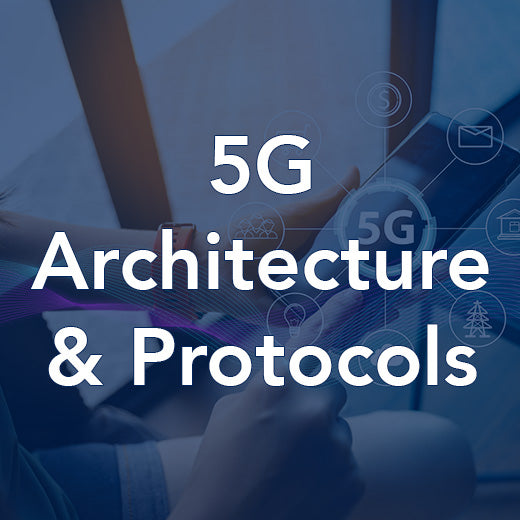
5G Architecture and Protocols Overview
Course Summary This 5G Architecture and Protocols Overview training course provides a comprehensive technical introduction to the 5G network, covering design goals, development schedules, and the core and radio access networks of 5G. Engineers new to or already working in mobile communication networks will benefit from this course, which assumes familiarity with telecommunications and general engineering terminology, with some understanding of LTE cellular systems being beneficial. The course covers a range of topic areas, including 5G introduction, key features, and standardization, use cases and performance objectives, radio access network architecture and protocols, core network architecture and protocols, network function virtualization, network slicing, interworking and compatibility between 5G, LTE, and Wi-Fi, PDU connectivity, Quality of Service, service provision, and signaling procedures in the 5G network. Who would benefit This course is intended for engineers either new to, or already working in, mobile communication networks. Prerequisites Familiarity with telecommunications and general engineering terminology is assumed. Some understanding of LTE cellular systems would be beneficial. Topic Areas Include: 5G introduction, key features and standardisation Use cases and performance objectives Radio access network architecture and protocols Non standalone and standalone deployment options Core network architecture and protocols Network function virtualisation and network slicing Interworking and compatibility between 5G, LTE and Wi-Fi PDU connectivity, Quality of Service and service provision Signalling procedures in the 5G network Also available as a Self-Study Online Learning Programme, learn more.
POA: Private Course
-
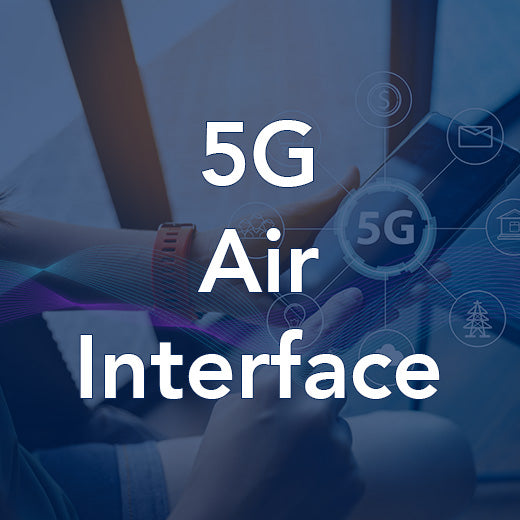
5G Air Interface Overview
Course Summary This 5G Air Interface Overview training course provides a technical introduction to the 5G New Radio. Participants will gain insight into the design goals, development schedule, principles, design, and implementation of the 5G air interface. Engineers who are new to or already working in mobile radio communications will benefit from this course, which assumes familiarity with telecommunications and general engineering terminology. Some understanding of LTE cellular systems would also be beneficial for attendees. During this course participants will delve into various topic areas related to 5G, including key features and standardization, use cases, performance objectives, deployment options, radio spectrum, millimeter-wave communications, principles of radio transmission and reception, multiple antennas, air interface protocol stack, architecture of the air interface physical layer, and procedures for data transmission and reception on the 5G air interface. For those looking for a self-paced option, this course is also available as a Self-Study Online Learning Programme. Who would benefit This course is intended for engineers either new to, or already working in, mobile radio communications. Prerequisites Familiarity with telecommunications and general engineering terminology is assumed. Some understanding of LTE cellular systems would be beneficial. Topic Areas Include: 5G introduction, key features and standardisation Use cases and performance objectives Non-standalone and standalone deployment options Radio spectrum and millimetre wave communications Principles of radio transmission and reception in 5G Multiple antennas in 5G Air interface protocol stack Architecture of the air interface physical layer Procedures for data transmission and reception on the 5G air interface Also available as a Self-Study Online Learning Programme, learn more.
POA: Private Course
-

5G Engineering Overview
This 5G Engineering Overview course is a technical overview of 5G. The course includes the design goals and development schedule for 5G, and the principles and architecture of the 5G air interface, radio access network and core network. This 5G Engineering Overview training course provides a comprehensive technical overview of 5G, including its design goals, development schedule, and the principles and architecture of the 5G air interface, radio access network, and core network. Engineers new to or already working in mobile communications will benefit from this course, gaining valuable insights into the latest advancements in 5G technology. Participants in this course are assumed to have familiarity with general engineering and telecommunications terminology, with some understanding of LTE cellular systems being beneficial. The course covers a range of topic areas, including 5G introduction and key features, standardization and timelines for 3GPP and the ITU, use cases and performance objectives, radio spectrum and millimeter wave communications, principles of radio transmission and reception in 5G, radio access network architecture, non-standalone and standalone deployment options, core network architecture, network function virtualization and network slicing, and interworking and compatibility between 5G, LTE, and Wi-Fi. Overall, this 5G Engineering Overview training course offers a valuable opportunity for engineers to deepen their understanding of 5G technology and its implications for mobile communications. Who would benefit This course is intended for engineers either new to, or already working in, mobile communications. Prerequisites Familiarity with telecommunications and general engineering terminology is assumed. Some understanding of LTE cellular systems would be beneficial. Topic Areas Include 5G introduction and key features Standardisation and timelines for 3GPP and the ITU Use cases and performance objectives Radio spectrum and millimetre wave communications Principles of radio transmission and reception in 5G Radio access network architecture Non standalone and standalone deployment options Core network architecture Network function virtualisation and network slicing Interworking and compatibility between 5G, LTE and Wi-Fi
POA: Private Course
-
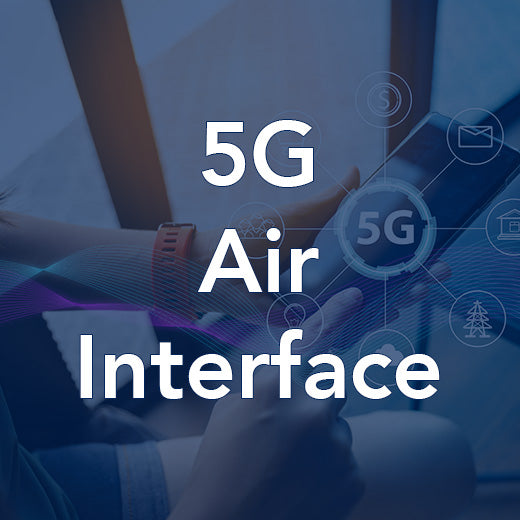
5G Air Interface
Our 5G Air Interface training course provides a comprehensive technical overview of the air interface for the 5G New Radio (5G NR). This course delves into the principles of millimetre wave and multiple antenna communications, the architecture and implementation of the air interface's physical layer, as well as the higher layer air interface protocols and signalling procedures for both idle and active 5G devices. Ideal for engineers and professionals involved in equipment design, operation, optimization, or monitoring on the 5G air interface, this course assumes an engineering background with some knowledge of general radio principles and digital radio systems. While a basic understanding of 5G and experience with LTE radio systems are desirable, they are not mandatory prerequisites.In addition to the 2-day course covers a range of topic areas including 5G introduction, use cases, and standardization, radio spectrum and millimetre wave communications, principles and implementation of multiple antennas in 5G, and more. For those looking to deepen their understanding further, we also offer an optional 5G Virtual Lab Module where participants can explore, test, optimize, and troubleshoot the 5G system in a fully emulated environment. Join us to enhance your knowledge and skills in the dynamic world of 5G technology. Who would benefit The course is intended for engineers and other staff who are involved with equipment design, operation, optimization or monitoring on the 5G air interface. Prerequisites An engineering background with some knowledge of general radio principles and digital radio systems is assumed. A basic understanding of 5G and experience of LTE radio systems would be desirable. Topic Areas Include: 5G introduction, use cases and standardisation Radio spectrum and millimetre wave communications Principles and implementation of multiple antennas in 5G Architecture of the air interface physical layer Details and implementation of the 5G physical, transport and logical channels Air interface procedures for synchronisation, scheduling, data transmission, feedback and random access Dual connectivity architecture and protocol stacks Optional 5G Virtual Lab Module Explore, Test, Optimise, and Troubleshoot the 5G System Deep dive into the key signalling scenarios in the 5G system and analyse the output to build a deeper understanding that goes beyond the theoretical. The lab is a fully emulated 5G System environment that enables you to experiment with the configurations for Network Functions and build customized settings for signalling scenarios that helps you to develop greater insight into the operation of the 5G System. Lab modules can be added to any relevant 5G course. Learn more and arrange a demo. Also available as a Self-Study Online learning programme, learn more.
POA: Private Course
-
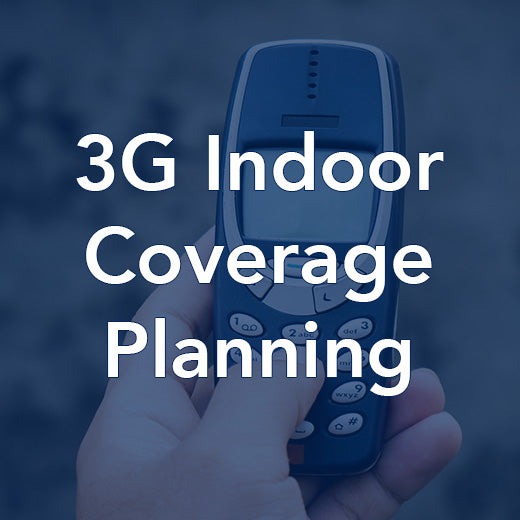
3G Indoor Coverage Planning
Course Summary Enhance your skills in 3G indoor coverage planning with our comprehensive training course. Designed for experienced GSM indoor planners looking to transition into WCDMA coverage, this course covers various indoor scenarios and planning techniques to provide you with the knowledge and expertise needed in indoor UMTS coverage. Ideal for engineers moving into UMTS indoor coverage or those working in planning-related roles, this course delves into topics such as traffic dimensioning, propagation modeling, link budgets, antenna positioning, and more. With practical planning exercises included, you will gain hands-on experience to apply your learnings in real-world scenarios.Don't miss this opportunity to advance your career in indoor coverage planning. Who would benefit Experienced GSM indoor planning engineers moving into UMTS indoor coverage, as well as those working in planning-related areas or needing to understand UMTS planning considerations. Prerequisites Attendees should already have knowledge and experience of GSM indoor coverage planning. Previous attendance on the UMTS Air Interface course (MB2002) is advantageous. Topic Areas Include: Traffic dimensioning Office and corporate scenarios Shopping centres Packet-switched traffic Propagation modelling Measurements Link budgets Antenna positioning Tunnels Stadiums RF safety (ICNIRP) Picocells Repeaters Femtocells Distributed antennas Fibre distribution Integrating indoor cells Includes practical planning exercises.
POA: Private Course
-

2G to 4G Mobile Networks
Course Code: MB1404 Course Overview This 2G to 4G Mobile Networks training course offered by Wray Castle provides a comprehensive technical overview of key cellular technologies, including 2G GSM, GPRS, 3G UMTS, and 4G LTE, all in one convenient package. Designed for technical professionals who need a solid understanding of these technologies without the need to delve into each one separately, this course is ideal for engineers, technical sales representatives, technical managers, and other staff members looking to gain a broad understanding of modern mobile technologies.Participants in this course do not need any specific prerequisites other than the ability to grasp technical information, making it accessible to a wide range of individuals interested in expanding their knowledge of mobile networks. The curriculum covers essential topics such as PSTN overview, SS7 signaling basics, call control signaling, GSM CS domain interfaces and protocols, UMTS architecture, LTE, and more. By the end of the training, attendees will have a solid foundation in 2G to 4G mobile networks, enabling them to better navigate the complexities of modern cellular technologies in their professional roles. Who Would Benefit This course is suitable for engineering, technical sales, technical management and other staff who require a general technical overview of modern mobile technologies but who do not need to invest the time necessary to learn about each technology in depth. Prerequisites This is a technical foundation course. Candidates do not need any specific prerequisites other than the ability to grasp technical information. Course Contents PSTN Overview SS7 Signalling Basics Call Control Signalling, ISUP and SCCP 2G Circuit Switched Domain GSM CS Domain Interfaces and Protocols CAMEL GPRS UMTS Architecture Overview UMTS Air Interface UMTS Circuit Switched Core – Protocols and Procedures UMTS Packet Switched Core – Protocols and Procedures LTE
POA: Private Course
-

LTE Quality of Service
Course Code: LT1314 Course Summary Our LTE Quality of Service training course is designed to provide a comprehensive understanding of the key concepts and principles behind Quality of Service (QoS) in LTE networks. This course delves into the End-to-End EPS Bearer and the underlying Transport Network Layer (TNL) where QoS is crucially applied. Participants will explore the main QoS concepts and learn about the interworking between LTE QoS and other network types such as UMTS, GPRS, and IMS.This course is ideal for engineering and technical management professionals who need a technical overview of the technologies and techniques utilized by 4G LTE networks to define and control the QoS for user connections. Participants are expected to have an engineering background with some knowledge of telecommunications technologies and protocols. Previous LTE training and familiarity with QoS mechanisms in legacy 2G and 3G networks would be beneficial.By enrolling in this course, you will gain insights into topics such as E-UTRAN architecture and interfaces, EPS Bearer and PDN Connectivity options, LTE QoS parameters, QCI, ARP, QoS Management, LTE PCC mechanisms, TNL concepts, DiffServ, MPLS, Ethernet QoS, and much more. Enhance your knowledge and skills in LTE QoS with our expert-led training course. Who would benefit This course is suitable for engineering and technical management staff who require a technical overview of the technologies and techniques employed by 4G LTE networks to define and control the QoS applied to user connections. Prerequisites An engineering background with some knowledge of telecommunications technologies and protocols is assumed and previous LTE training would be beneficial, as would knowledge of QoS mechanisms in legacy 2G and 3G networks. Topic Areas Include E-UTRAN architecture and interfaces EPS Bearer and PDN Connectivity options and operations User plane connection concepts, packet flows, SDFs and Traffic Flow Aggregates LTE QoS parameters, QCI, ARP QoS parameter representation in LTE signalling protocols QoS Management – TFTs and packet filters LTE PCC (Policy and Charging Control) mechanisms PCC Rules, function and structure Interaction between PCC elements and internal and external network nodes Mapping LTE QoS to legacy network schemes Measuring QoS TNL concepts, architecture and QoS mechanisms DiffServ, MPLS and Ethernet QoS End-to-End QoS Architecture and Operation Network node QoS functions QoS influence on LTE handovers Also available as a Self-Study Online Learning Programme, learn more.
POA: Private Course
-
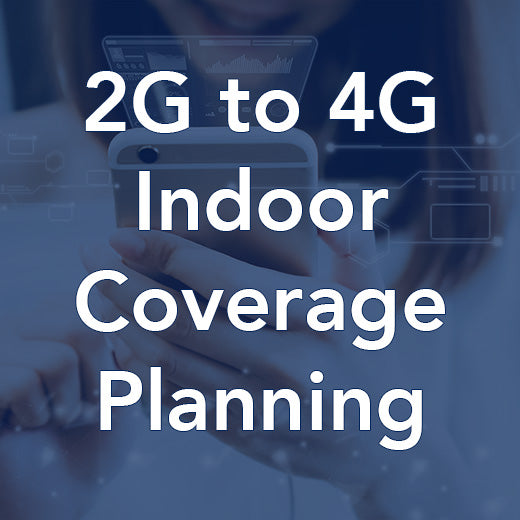
2G to 4G Indoor Coverage Planning
Course Code: MB1304 Course Summary This 2G to 4G Indoor Coverage Planning course is intended for experienced cell planners wishing to move into indoor coverage planning. The course details all of the issues of indoor planning from initial site survey to integration. This 2G to 4G Indoor Coverage Planning course is designed for experienced cell planners looking to transition into indoor coverage planning. From initial site surveys to integration, this course covers all aspects of indoor planning in detail. Participants will gain valuable insights into indoor propagation considerations, calculating indoor coverage, equipment for measuring coverage, methods for providing coverage, passive and active DAS, indoor antennas, link budget calculations, handover parameters, MIMO configurations, and coverage in challenging environments like elevators and trains. Practical planning exercises are also included to enhance learning and application of the concepts covered.Ideal for experienced cell planners seeking to expand their expertise into indoor coverage planning, as well as individuals who need to understand the complexities of indoor planning issues, this course offers a comprehensive overview of the planning process for GSM, UMTS, and LTE networks. Previous attendance on the Cell Planning for UMTS Networks and Cell Planning for LTE Networks courses is advantageous for participants looking to maximize their learning outcomes. Who would benefit Experienced cell planners wishing to move into indoor coverage planning, as well as those who need to understand indoor planning issues. Prerequisites Previous attendance on the Cell Planning for UMTS Networks course (MB2005) and Cell Planning for LTE Networks (LT2901) is advantageous. Topic Areas Include The planning process Initial planning and site survey Traffic dimensioning for GSM, UMTS and LTE Indoor propagation considerations Calculating indoor coverage Equipment for measuring indoor coverage Methods for providing indoor coverage Passive DAS Active DAS Indoor antennas Link budget calculations for GSM, UMTS and LTE Handover and cell reselection parameters for GSM, UMTS and LTE MIMO configurations Coverage in elevators and trains Includes practical planning exercises.
POA: Private Course
-

Inside O-RAN: Intelligent Architecture and Traffic Control (On-Demand)
5gThis short course is designed to provide a focused introduction to two key aspects of the Open Radio Access Network (O-RAN) framework: Module 1: O-RAN Architecture and Intelligent Control Explore the core components of the O-RAN architecture, including the disaggregated network functions, key interfaces, and the role of Artificial Intelligence and Machine Learning in enabling intelligent, automated network optimisation. Module 2: O-RAN Use Cases and Traffic Steering Learn how O-RAN supports more flexible and mobile-centric traffic steering strategies. The module explains the motivations behind operator-defined policies, the roles of the RICs, and includes a practical use case illustrating how traffic can be dynamically steered based on service requirements.
£95.00
-

Introduction to MEC (On-Demand)
Multi-access Edge Computing (MEC) is redefining how services are delivered by bringingcomputing power closer to the user - at the network edge. This approach reduces latency,improves efficiency, and enables new applications across industries. In this course, you’ll start by answering the question: What is MEC? You’ll explore itsconceptual foundations, the role of ETSI, and the drivers behind this shift, including costrealignment and the need for ultra-low latency. The course introduces enablingtechnologies such as cloud computing, virtualization, NFV/SDN, and 4G/5G, showing howthey combine to make MEC possible. Next, you’ll examine the MEC architecture, including service-based interfaces and highlevelrequirements for features and services. You’ll dive into real-world use cases, fromvideo analytics and location-based services to Industry 4.0, AR/VR, and V2X applications.The course also addresses challenges posed by MEC and how they are being overcome.Designed for professionals in telecoms, IT, and emerging technology fields, this courseprovides a clear, practical introduction to MEC - ideal for anyone seeking to understandhow edge computing enables next-generation services. Course Contents Introduction to MEC What is MEC Enabling Technologies for MEC MEC Overview MEC Architecture Requirements Use Cases Emerging Technologies
£95.00
-

Cellular Communication - Idle and Connected Mode Activities (On-Demand)
Mobile devices constantly switch between idle and connected states to balanceperformance and power efficiency. Understanding these activities is essential for anyoneworking in mobile networks, radio planning, or device optimization. In this course, you’ll start with idle mode activities, exploring how devices select andreselect cells across technologies like GSM, UMTS, LTE, 5G, and Wi-Fi. You’ll learn aboutpower-on procedures, cell selection criteria, location updating, and how routing and trackingareas are managed. The course explains key parameters such as C1 and C2, andintroduces advanced concepts like URA updates and PLMN selection. Next, you’ll dive into connected mode activities, covering measurement procedures andhandover strategies for GSM, UMTS, LTE, and 5G. You’ll explore how devices report signalquality, trigger events for handover, and maintain connectivity during mobility. Topicsinclude soft handover, outer loop power control, and advanced measurement events (A1–A6, B1–B2) used in 5G networks. You’ll also learn about automatic neighbour relations andhow they simplify network management. Designed for professionals in telecoms and wireless engineering, this course provides aclear, practical introduction to idle and connected mode operations - ideal for anyoneseeking to understand how mobile devices interact with cellular networks in real-worldscenarios. Course Contents Idle Mode Activity for Mobile Devices GSM Cell Selection GSM Cell Reselection Location Updating UMTS Cell Selection and Reselection UMTS Update Procedures LTE Power On Procedure LTE Cell Reselection 5G Cell Selection Procedure 5G Cell Reselection Wi-Fi Mobility Connected Mode Activity for Mobile Devices GSM Handovers UMTS Handovers LTE Handovers 5G Handovers
£95.00
-

Radio Propagation, Interference and Coverage - an Introduction (On-Demand)
Radio signals don’t just travel in straight lines - they interact with the environment incomplex ways. Understanding how propagation works, and what affects coverage andinterference, is essential for anyone involved in wireless communications, broadcasting, ornetwork planning. In this single-module course, you’ll start with the fundamentals of radio propagation,exploring how signals behave across different frequency bands - from VLF and LF throughHF, VHF, and beyond. You’ll learn about the role of the ionosphere, how conditions varybetween day and night, and how space waves enable long-distance communication.Next, you’ll examine radio coverage, including key factors such as reflection, scattering,diffraction, and attenuation. The course explains how terrain, clutter, and atmosphericanomalies impact signal reach, and why coverage planning is critical for reliable service. Finally, you’ll dive into radio interference, covering issues like co-channel and adjacentchannel interference, illegal operation, and frequency planning. You’ll also explore howweather conditions and noise affect performance, and what strategies help mitigate thesechallenges. Designed for professionals in telecoms, broadcasting, and wireless technologies, thiscourse provides a clear, practical introduction to radio propagation, coverage, andinterference - ideal for anyone seeking to understand the principles behind reliable radiocommunication. Course Contents Propagation Radio Coverage Radio Interference
£95.00
-

NFV Architecture and Infrastructure (On-Demand)
Network Functions Virtualisation (NFV) is transforming how modern networks are built, managed, and scaled. By decoupling network functions from proprietary hardware and running them on virtualised environments, NFV enables flexibility, efficiency, and innovation across telecom and IT ecosystems. In this course, you’ll explore the NFV functional architecture and the NFV Infrastructure (NFVI) that underpins it. Starting with the NFV framework and its core principles, you’ll learn how virtualised network functions (VNFs) are composed, scaled, and interconnected. The course introduces key concepts such as VNF descriptors, forwarding graphs, and reference points, giving you a clear view of how NFV systems communicate and operate. You’ll also dive into the NFVI layer, examining its components - compute, storage, and networking, and how technologies like hypervisors, cloud computing, and virtualisation enable NFV deployments. Topics include performance optimisation, security aspects, and advanced techniques such as CPU pinning, micro-segmentation, and VXLAN overlays. By the end, you’ll understand how NFV and MANO (Management and Orchestration) work together to deliver agile, scalable network services. Designed for professionals in telecoms, IT, and network engineering, this course provides a practical, jargon-free introduction to NFV architecture and infrastructure - ideal for anyone looking to understand the foundations of virtualised networking without diving into vendor-specific details. Course Contents NFV Functional Architecture NFV Framework and VNFs Virtual Links and Forwarding Graphs Reference Points and Infrastructure Options NFV Infrastructure (NFVI) NFVI Architecture NFVI and Virtualization Hypervisor Domain Containerisation Compute and Infrastructure Network Domains NFVI Implementation
£95.00
-

Cellular Radio Measurements (On-Demand)
Cellular networks rely on precise measurements to deliver reliable coverage and highqualityservice. Understanding these principles is essential for anyone working in mobilecommunications, network planning, or performance optimization. In this course, you’ll start with the foundations of cellular radio, exploring traditionalcoverage methods, the cellular philosophy, and concepts like reuse distance, cellhierarchies, and antenna configurations. You’ll learn how propagation, multipath effects,and fading - such as Rayleigh and Rician fading, impact signal quality, and how diversitytechniques improve performance. Next, you’ll dive into radio measurements, covering key concepts such as logarithms,decibels, and power levels in dBm and dBW. The course explains how to perform systemcalculations and interpret measurements across technologies including GSM, UMTS, LTE,and Wi-Fi. You’ll explore metrics like RSRP, RSRQ, SINR, and timing advance, and seehow best-server plots are used for network optimization. Designed for professionals in telecoms and wireless engineering, this course provides aclear, practical introduction to cellular radio measurements - ideal for anyone seeking tounderstand how signal strength and quality are assessed in modern mobile networks. Course Contents Cellular Radio Principles Cellular Philosophy Base Stations Cellular Coverage Cells in Built up Areas Propagation Issues Radio Measurements Decibels GSM Measurements UMTS Measurements LTE Measurements SINR Measurements 5G Measurements Wi-Fi Measurements
£95.00
-

Cellular Backhaul Technologies (On-Demand)
Backhaul is the backbone of mobile networks, connecting cell sites to the core and ensuring seamless service delivery. As networks evolve to support 4G, 5G, and beyond, understanding backhaul technologies and planning principles is critical for telecom professionals. In this course, you’ll start with an overview of backhaul planning, including traditional and evolved requirements, architecture for multi-RAT environments, and techniques for dimensioning transport networks. You’ll learn how backhaul supports access networks and why its design impacts performance and scalability. Next, you’ll explore transport network architecture, covering 3GPP definitions, layered design, and evolution toward multi-operator and multi-RAT solutions. The course examines backhaul transmission options, comparing Layer 1 technologies, Ethernet physical layers, and microwave radio systems, along with their capacities and limitations. You’ll also dive into synchronization for mobile backhaul, including frequency, phase, and time requirements. Topics include Precision Time Protocol (PTP), Synchronous Ethernet, telecom profiles, and synchronization architectures for packet-based networks. Finally, you’ll review industry initiatives and standards, such as NGMN and MEF, and learn how IP/MPLS, VLAN management, and QoS mapping enable secure, resilient backhaul. The course addresses security, load balancing, and operational best practices for modern mobile networks. Designed for professionals in telecoms and network engineering, this course provides a clear, practical introduction to cellular backhaul technologies - ideal for anyone seeking to understand how transport networks evolve to meet the demands of next-generation mobile services. Course Contents Backhaul Planning Overview Transport Network Backhaul Technologies Synchronisation of Mobile Backhaul Backhaul Initiatives
£95.00
-

MEC APIs and Service Integration (On-Demand)
Multi-access Edge Computing (MEC) relies on robust APIs and standards to enableseamless integration of applications and services at the network edge. Understanding these interfaces is key to unlocking MEC’s full potential in 5G and beyond. In this course, you’ll start with an overview of MEC standards and the ETSI standardizationprogramme, including the latest developments and principles behind API design. You’llexplore core APIs such as Radio Network Information, Location Services, UE Identity,Bandwidth Management, and Multi-Traffic Steering, as well as APIs for WLAN, fixedaccess, V2X, and IoT. The course also covers application management interfaces,including lifecycle management, package management, and application descriptors (AppD). Next, you’ll dive into advanced topics such as MEC federation, support for slicing, securityand regulatory considerations, and best practices for QoS measurement. You’ll learn howMEC integrates with 5G networks, including traffic steering, local access to the 5G datanetwork, and mapping MEC APIs to CAPIF. Real-world examples, proofs of concept, anddeployment trials illustrate how MEC APIs enable interoperability and innovation acrossdiverse ecosystems. Designed for professionals in telecoms, IT, and edge computing, this course provides aclear, practical introduction to MEC APIs and service integration - ideal for anyone seekingto understand how standards and interfaces drive next-generation edge services. Course Contents API Principles Core Service APIs Advanced Service APIs Management APIs Additional Standardization Topics – Part 1 Additional Standardization Topics – Part 2 5G integration issues – Part 1 5G Integration issues – Part 2 5G Integration MEC Ecosystem
£95.00
-

SDN - An Introduction (On-Demand)
Software Defined Networking (SDN) is reshaping how networks are designed, managed,and scaled. By separating the control and data planes, SDN introduces flexibility,programmability, and automation - key drivers for modern network evolution. In this course, you’ll begin with the foundations of SDN, exploring its origins, goals, and howit differs from traditional networking. You’ll learn why SDN emerged, the role of virtualisationand cloud computing, and how concepts like X-as-a-Service and network abstractionsinfluence its design. The course explains SDN’s split architecture, hierarchical interfaces,and control plane abstractions, giving you a clear understanding of how SDN enables agile,software-driven networks. Next, you’ll dive into SDN architecture and standards, covering evolving switch designs,controller interactions, flow tables, and deployment techniques such as hybrid, edge, andpanopticon models. You’ll also explore open-source platforms like OpenDaylight andONOS, and see how SDN integrates with NFV for end-to-end service orchestration. Designed for professionals in telecoms, IT, and networking, this course provides a practical,jargon-free introduction to SDN - ideal for anyone looking to understand the principles,architecture, and real-world applications of software-defined networking. Course Contents Introduction to SDN Evolution to SDN Abstracted View of Networks SDN Control Example SDN Application SDN and NFV SDN Architecture and Standards Network and SDN Architecture SDN Architecture Switch Deployment SDN Open-Source Components
£95.00
-

Radio Frequency, Bandwidth and Spectrum - an Introduction (On-Demand)
Radio frequency and spectrum are at the heart of modern communications, enablingeverything from mobile networks to broadcasting and satellite services. Understanding how frequency, bandwidth, and spectrum work is essential for anyone involved in telecoms, networking, or wireless technologies. In this course, you’ll start with the fundamentals of frequency and bandwidth, exploringconcepts such as sine waves, time and frequency domains, and the differences betweenanalogue and digital signals. You’ll learn how signal quality is measured, how analogue-to digital conversion works, and why bandwidth matters for services ranging from humanspeech to commercial applications. Next, you’ll dive into the radio spectrum, examining how frequencies are allocated andmanaged globally and nationally. The course introduces key organisations and frameworks, including ITU-R, CEPT, ECO, and Ofcom, and explains how spectrum licensing and exemptions operate within the UK. You’ll also gain insight into the role of World RadioConferences (WRC) in shaping international spectrum policy. Designed for professionals in telecoms, broadcasting, and wireless technologies, thiscourse provides a clear, practical introduction to frequency, bandwidth, and spectrum - ideal for anyone seeking to understand the foundations of radio communication without getting lost in technical complexity. Course Contents Frequency and Bandwidth Radio Spectrum
£95.00
-

NFV Use Cases (On-Demand)
Network Functions Virtualisation (NFV) isn’t just a concept, it’s a practical solution shapingthe future of telecom and IT services. This course explores real-world NFV applications,showing how virtualisation delivers flexibility, scalability, and cost-efficiency across diversenetwork environments. In this course, we’ll look at NFV use cases, diving into specific scenarios, including: NFVI as a Service (NFVIaaS) and how it operates across multiple domains Virtual Network Function as a Service (VNFaaS) and Virtual Network Platform as aService (VNPaaS), plus a comparison of the two VNF Forwarding Graphs (VNF FGs) and their role in service chaining Virtualisation of mobile core networks, IMS, base stations, and home environments Advanced deployments such as virtual CDNs (vCDN) and fixed access NFV You’ll also explore ETSI Proof of Concept (PoC) projects, including demonstrations ofvirtual EPC applications, SDN-controlled forwarding graphs, and resilience techniques. These examples show how NFV is implemented in real networks and the benefits it bringsto operators and service providers. Designed for professionals in telecoms, IT, and network engineering, this course provides apractical, jargon-free look at NFV in action. Ideal for anyone who wants to understand howvirtualisation is applied to real-world network challenges.
£95.00
-

Radio Surveys: Practical Tool Use - an Introduction (On-Demand)
Accurate radio surveys are essential for planning, optimizing, and troubleshooting wirelessnetworks. This course introduces the tools and techniques used in real-world surveyscenarios, helping you understand how measurements are captured and analysed forreliable coverage. In this course, you’ll start with practical demonstrations of survey tools, including drivesurvey systems, R&S ROMES drive test software, and R&S TSMA radio scanners. You’lllearn how measurements are recorded outdoors and indoors, and explore advancedfeatures such as automatic cell detection (ACD), cellular coverage surveys, and basestation analysis. The course also covers cell position estimation, handover analysis, andWi-Fi coverage surveys, giving you a comprehensive view of survey applications. Next, you’ll gain guidance for conducting radio network surveys, including best practices forpersonal safety, spot/location surveys, route profiling, and indoor coverage assessments.You’ll learn how to choose between idle mode and connected mode measurements, andhow to perform specialized surveys such as network profiling and aeronautical surveys.Designed for professionals in telecoms and wireless engineering, this course provides apractical, hands-on introduction to radio survey tools and techniques - ideal for anyoneseeking to understand how coverage data is collected and used to optimize networkperformance. Course Contents Tools for Radio Surveys - Practical Demonstrations Mobile Drive Survey Tools PC Based Survey Tools Indoor Surveys Radio Scanners R&S NESTOR Survey Tool Automatic Cell Detection (ACD) Cellular Coverage Surveys Base Station Analysis Cell Position Estimation Wi-Fi Network Surveys Guidance for Radio Network Surveys Guidance for Radio Network Surveys
£95.00



































